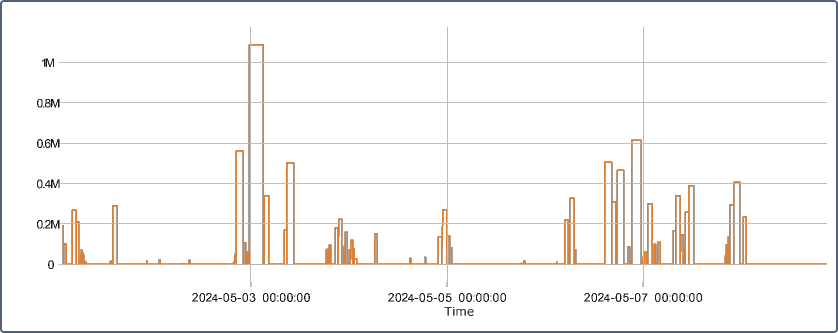Counter sensors
The Counter sensors table shows the operation of the Counter type sensors.
To receive the information about a specific counter sensor, specify its name or part of the name using wildcard symbols — an asterisk * (replaces several characters) or question mark ? (replaces one symbol) in the Sensor masks section of the table settings. The sensor name can’t contain commas. If sensor masks are not specified, the information in the table is displayed for all counter sensors of the unit.
The Counter sensors table can include the columns described below.
| Column | Description |
|---|---|
| Sensor | The name of the sensor. |
| Activated | The time of activation. |
| Deactivated | The time of deactivation. |
| Duration | The duration of the operation. |
| Total time | The time from the beginning to the end of sensor activation. It is recommended to use this column in combination with the grouping parameter or the Total row. If the Total row is configured in the table, it shows all the time that elapsed from the beginning of the first activation of the sensor to the end of the last one. |
| Location | The location at the moment of sending the data. |
| Mileage | The distance traveled for the operation period. |
| Mileage (adjusted) | Mileage subject to the coefficient set in the unit properties on the Advanced tab. |
| Avg speed | The average speed at this interval. |
| Max speed | The maximum speed at this interval. |
| Counter | The value of the counter sensor. By default, it is rounded to an integer number. |
| Geofences/Units | The column that includes the names of the geofences or units which were crossed during a given interval. The required geofences and units should be indicated in the filtering parameters. If at some interval there were several geofences or units like that, in the table there will be the name of the geofence with the smallest area or the name of the unit with the smallest radius of approximation. If the sizes coincide, all the names will be included. |
| Driver | The name of the driver (if available). |
| Trailer | The name of the trailer (if it was assigned). |
| Penalties | The penalties calculated for the adjusted Eco driving criteria. Penalty averaging for grouping rows (group headings) can be adjusted in report settings. |
| Rank | The received penalty points converted into a 10-point rating system. |
| Notes | An empty column for your custom comments. |

The mileage values are displayed in the table as fractional numbers. However, when exporting to an Excel file the values are rounded.
Interval filtering can be applied to the Counter sensors table: by duration, mileage, engine hours, speed range, trips, stops, parkings, sensors, drivers, fuel fillings, fuel drains, battery charges, and geofences/units.
The value of the counter sensor can be visualized in the chart that shows the operation intervals of the counter and its value. You can learn more about the charts here.
